Off the Bike in Provence
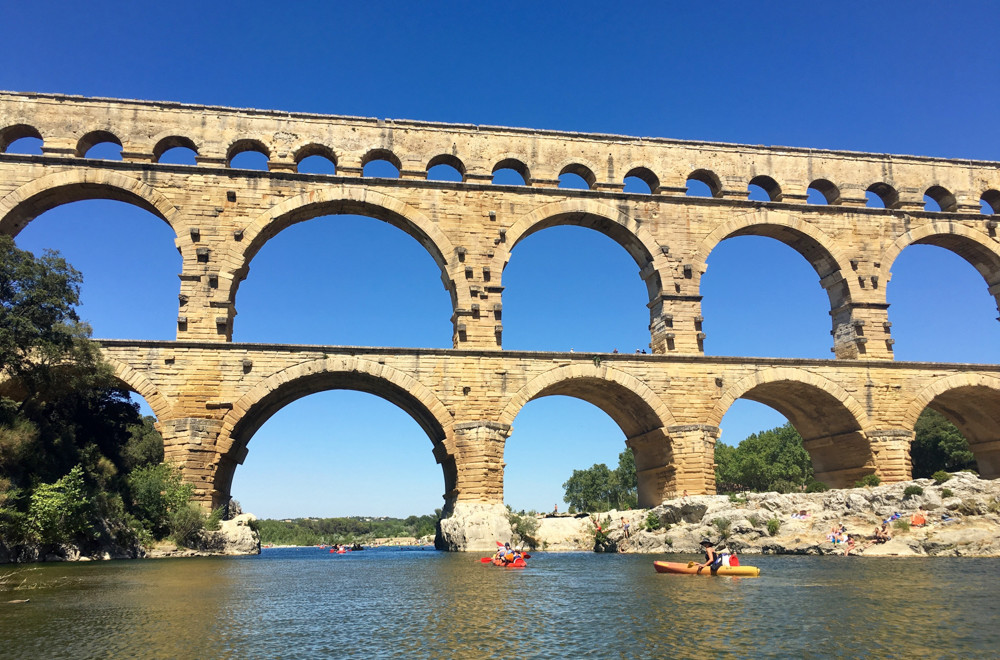
By the second time we arrived in Provence, (or close enough to it), I was all but over riding up mountains. Of course there would be the obligatory second ascent of Mont Ventoux, but spring had turned to summer and in the meantime I was looking forward to an entire three days exploring the other treasures on offer. Fruit stalls flanked every country road and fields of sunflowers and lavender rolled across the hillsides. Walking trails wound through Medieval villages and the rivers were covered with rafts and canoes. Ah canoeing, it had been a while.
I lay my paddle across my lap and leaned back in my kayak. It had been fifteen years since Colby and I conceded our relationship couldn’t withstand another canoeing expedition, but here we’d found a loophole. Though the tour operator had given us a strange look as he nodded past the rows of double kayaks to the only two singles at the water’s edge, the solitude was bliss . . . and a world away from steep hills and burning quads.
Sheer rock faces unfurled, as the Gardon River wound gently downstream. They took me back to the Top End of Australia and the Kimberley. Katherine Gorge, Windjana Gorge and Tunnel Creek. Only here there were far more people and fewer crocs. I stared up in familiar awe, and chewed on the offense I’d once taken at my European uncle’s indignant feedback on my tour guiding back home. “We just drove through eight hours of nothing to see a nice tree?” he’d said with disgust as we pulled into the outskirts of Derby. ‘Yes we’d driven 8 hours to see a nice tree!’ I wanted to snap back. A nice tree in one of the most beautiful places in the world. In my beloved Kimberley. Yet here I was, in the midst of civilisation on his side of the world, surrounded by an equally mesmerising landscape. I finally saw his point.
Pebbled banks flickered past and people dropped from the rock faces above, splashing into the water like stones. “All you have to do is sit there, and paddle on one side!” A male voice broke my silence, his anguished girlfriend slumped in the front seat of his canoe. I smiled. ‘This,’ I wanted to say, ‘is the reason I have my own canoe.’ But I’m sure my well-intentioned observation would not have been taken well.
The river widened and the three tiered arches of the Pont du Gard commanded the view. More than the Colosseum or the Roman Forum, Pompeii or any other Roman remain I’d seen, the bridge held me spellbound. The aqueduct, built more than 2,000 years ago, was used as part of a system to transport water fifty kilometres, through the hills into the city of Nimes. With a constant grade of only 1 in 3,000 it relied entirely on gravity and I couldn’t help but wonder, in the absence of modern surveying and engineering technology, how the Romans had got it so perfect. The structure used no mortar and was constructed entirely of precisely cut stone, the dark, protruding scaffold supports still visible. Possibly the most impressive fact Colby tossed from his canoe into mine, was that the structure is curved, allowing for expansion in the side that receives the most sunlight. They had got it so right that, here I was, 2,000 years later, floating under it.
Well-preserved Roman remains and picturesque gorges criss-cross the region and it is difficult not to be swept up by contemplation of the origins of civilisation. Of course there wasn’t enough time to see everything I had wanted to, but continuing on the trail of the ancient aqueduct (and still bike free) we later found ourselves pacing the attractive streets of Nimes. Although Nimes doesn’t technically fall within Provence today, historically it played a pivotal role in the development of the region.
I stepped out of the Maison Carree, or ‘square house,’ which once marked the centre of Roman Nimes, careful to place my right foot on the first step. Who knew if the superstition held on the way out, but I hedged my bets. Information on the uneven number of steps and the luck of placing the right foot on both the first and last would’ve been useful at the bottom. By the time I was sitting in the darkened theatre, learning the history of the place, it was too late. The building had survived the past 2,000 years, fulfilling a number of uses from a church and temple to a city hall and art gallery. Although disappointingly, the interior held no hint of it’s original appearance, the movie presentation was sufficiently simple, informative and entertaining to educate even the most clueless of us on origins of Nimes.
As far back as 4000BC, the area was inhabited by semi-nomadic people, but in the 1st century BC, after they committed to serve Julius Caesar during the fifteen year Nile campaigns, the inhabitants were rewarded for their efforts with plots of land and subsequently, the city was born.
Not unlike the Maison Carree, the Nimes amphitheatre has also weathered the years in a number of roles. From an arena to a fortress and then a gated community, its constant use is a possible reason for it’s well-preserved condition, better even than Rome’s Colosseum. Still in use as an entertainment venue, and with a concert scheduled for the evening, we were given a thirty-minute window for our visit. Just enough time to lose ourselves in the labyrinth of galleries and tunnels, then pop out on a narrow, unprotected edge teetering over the main street below. I pushed away the nagging feeling we were somewhere we shouldn’t have been as we disappeared back into the belly of the arena, reconstructing the crumbling walls in our minds. Had there been a timber floor above this gaping abyss? Or stone? Or was it even a floor at all?
While the amphitheatre acknowledges its barbaric past and the sickening treatment of prisoners, new information suggests that Gladiator sports themselves may not have been the bloodthirsty events we’ve come to know them as. With the duels rarely ending in death unless accidental, fresh suggestions liken the events to modern day boxing or wrestling.
My quads begin to protest again at the sight of the steep stone steps leading up to the Tour Magne, or the Great Tower, the only surviving remnant of the original city walls. Heat prickled my skin. No matter how many mountains I’d ridden up, tiny flights of stairs would always see me puffing like a horse. The watch tower offered uninterrupted views across the city and beyond, the amphitheatre standing proud in the centre and Mont Ventoux taunting in the distance. Tomorrow my friend. Tomorrow you will hurt me again, but for now I’m enjoying the view.

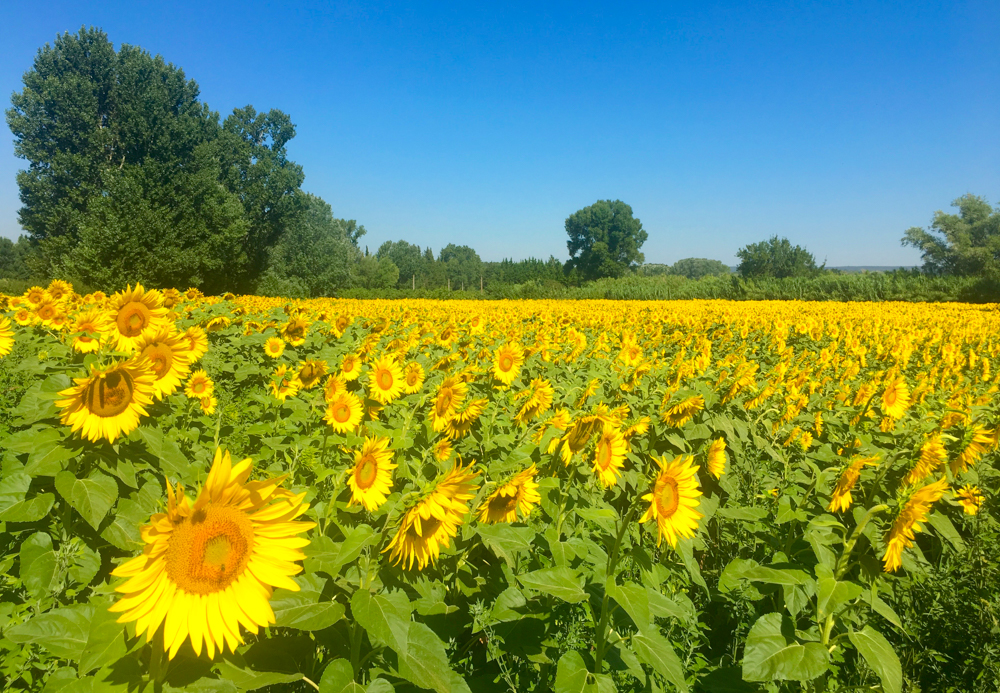
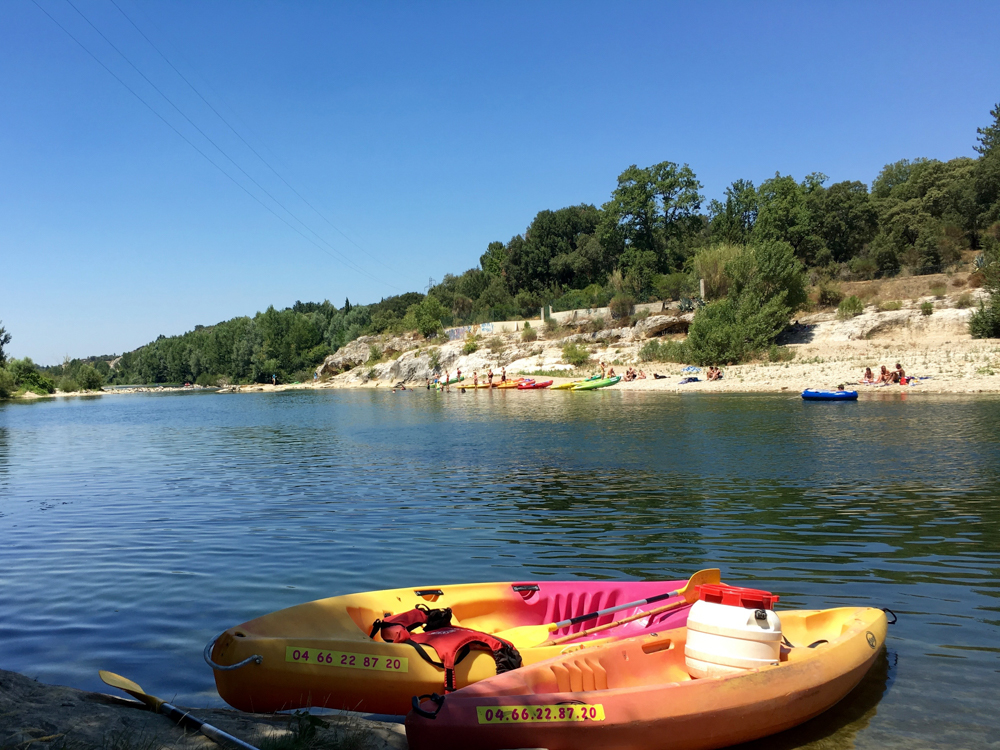
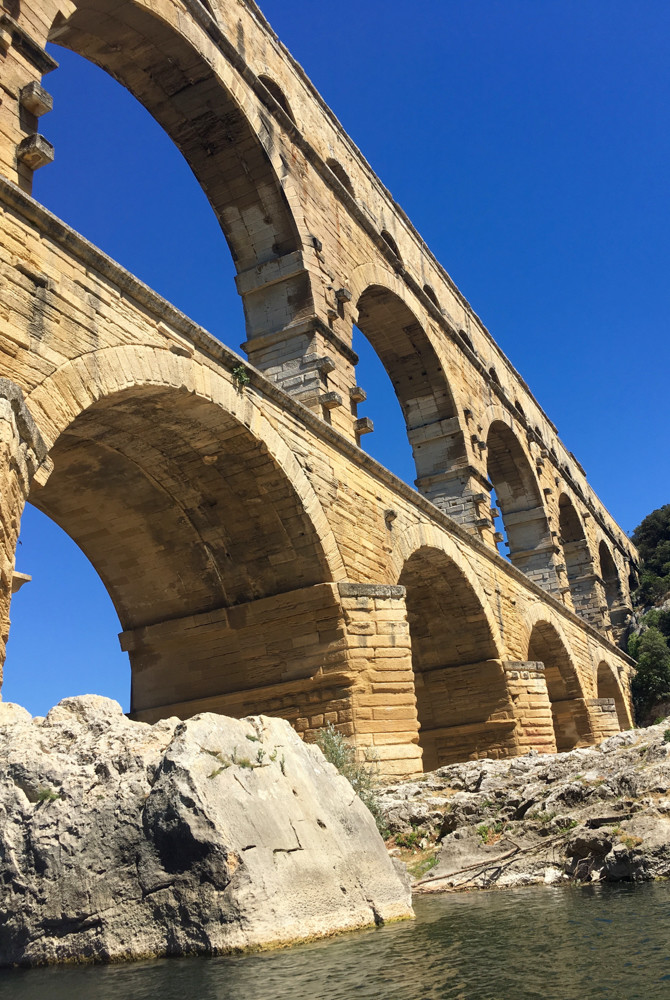
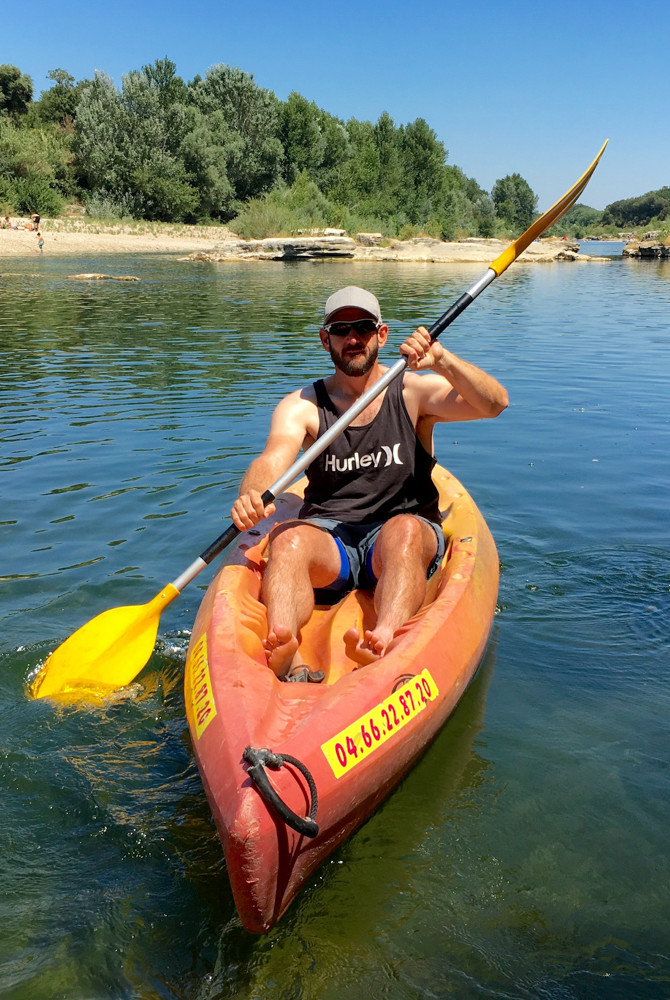



Wonderful piece Katie Bogle. On this very chilly morning in Perth you took me out in the sunshine, through the countryside (can smell the lavender) canoeing on a sparkling river, under an ancient aqueduct, into a Roman amphitheatre and through the streets of Nimes. My day is better for having shared this small part of your travels……..
Naw thanks Cath! Glad I could brighten your day 🙂
Fantastic!! Kate & Colby all the colourful pictures are beautiful. You have bought sunshine into our life.
Keep enjoying yourselves.